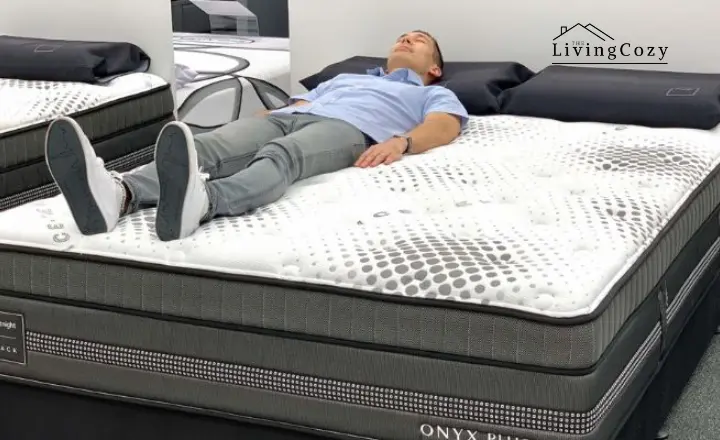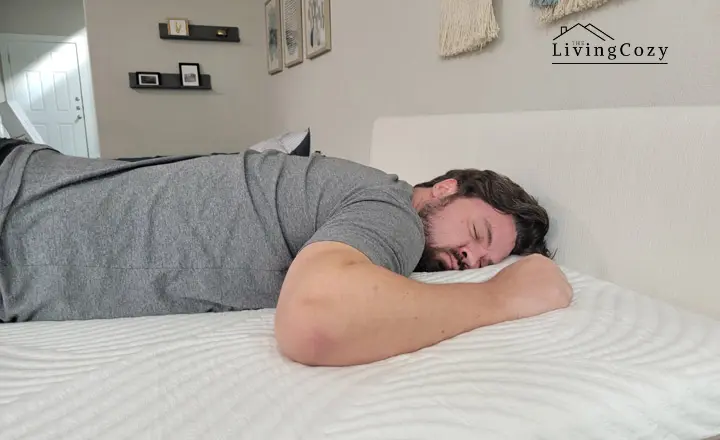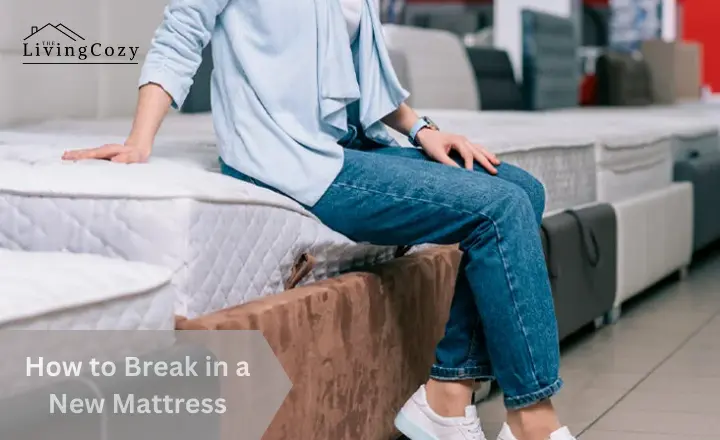Breaking in a new mattress is crucial for comfort and support for a restful night’s sleep. Whether you’ve invested in luxurious memory foam or a traditional innerspring mattress, understanding the art of breaking it in can make all the difference in your overall sleep experience.
We’ll explore tried-and-true methods how to break in a new mattress efficiently and effectively. From simple techniques like walking on the surface to allowing natural body heat to mold the materials.
Say goodbye to restless nights and hello to blissful slumber as we uncover the secrets of mastering your new mattress.
How to Break in a New Mattress Step by Step
Breaking in a new mattress is important for ensuring its longevity and comfort. Here are the steps to break in a new mattress:
- Allow time for the mattress to breathe: When you first unbox your new mattress, allow it to air out and expand fully before using it.
- Place the mattress on a proper foundation: Ensure that the mattress is placed on a supportive and suitable foundation, such as a box spring or platform bed.
- Apply pressure or weight: To help break in the mattress, you can walk across it, apply pressure with your hands, or use weighted blankets or pillows to compress the materials.
- Keep your bedroom warm: Maintaining a warm temperature in your bedroom can help soften the materials of the mattress and aid in the breaking-in process.
- Sleep on it: Using it regularly is the best way to break in a new mattress. Your body’s natural movements and weight will help mold the mattress to your comfort preferences.
By following these steps, you can effectively break in your new mattress and ensure optimal comfort and support for years to come.
Can You Sleep on a New Mattress Straight Away?

Yes, you can sleep on a new mattress straight away. Most modern mattresses are designed to be ready for use immediately after purchase.
It’s important to note that some mattresses may have a slight odor when first unwrapped due to the materials used in manufacturing. It’s recommended to let the mattress air out for a few hours before using it to allow any lingering smell to dissipate.
If you’ve purchased a memory foam mattress, it may take some time to fully expand and regain its intended shape after being unpacked. In this case, it’s best to follow the manufacturer’s instructions regarding how long to wait before using the mattress.
As long as no specific instructions from the manufacturer indicate otherwise, you should be able to sleep on your new mattress immediately.
Why does my New Mattress not feel like the one in the Store?
There are a few reasons why your new mattress may not feel the same as the one in the store.
- Due to frequent testing and wear, showroom mattresses often feel softer, making them more comfortable than brand-new mattresses.
- Different bed bases can alter the feel of the mattress, so if your bed base at home is different from the one in the store, it could affect how the mattress feels.
- Extra clothing or bedding in the showroom may also affect the feel of the mattress, creating a different experience compared to when you test it out at home with your usual bedding.
- Weight gain over time can change how a mattress feels, so if you’ve gained weight since trying out the mattress in the store, that could also be a factor.
How Long Does it Take to Adjust to a New Mattress?

Adjusting to a new mattress can take at least a month, as your body needs time to adapt to the change, especially when switching between memory foam and traditional mattresses.
It’s normal for the new mattress to initially feel uncomfortable, particularly if you are changing firmness levels. Memory foam mattresses may also feel warmer and take longer to adapt to than traditional sprung mattresses.
During the adjustment period, it’s important to give yourself time to get used to the new mattress and allow your body to acclimate. Be patient and give it a chance before judging its comfort level.
Remember that everyone’s experience with adjusting to a new mattress can vary, so it’s essential to listen to your body and give it the time it needs.
Apply Some Pressure:
It’s normal for it to feel firmer than expected at first. To speed up the softening process, apply gentle pressure by using your hands or body weight to help the materials conform to your shape.
Avoid bouncing on the mattress, as this can cause damage, and minimize sitting on the edge to prevent potential damage to the support structure. Following these tips can help your new mattress soften quickly and ensure longevity.
Remember that every mattress is different, so follow the manufacturer’s recommendations for breaking in your specific model.
Applying gentle pressure and avoiding excessive force will help your new mattress become more comfortable without causing unnecessary damage.
Check Your Bed Base:
Ensuring your new mattress has proper support from a suitable bed base is crucial. An old or unsuitable bed base could invalidate the mattress guarantee and affect its performance.
Check for any signs of sagging, dipping, squeaking, or creaking in the bed base, as these can impact the support and comfort of the mattress. Ensure that the slatted base meets the manufacturer’s recommendations to avoid any potential issues with the mattress.
It’s important to assess your bed base for proper alignment and functionality when getting a new mattress. This will help ensure that your mattress is adequately supported and that you can fully benefit from its warranty and performance.
Mattress Settlement:
It is normal for a new mattress to develop dips and indentations after several nights of use, especially with the pressure of body weight.
Regular turning can help distribute settlement evenly and prevent excessive wear in one area. Even non-turn mattresses should be rotated to ensure even settling.
Following care instructions for your mattress is crucial for optimal performance and longevity. This may include rotating the mattress regularly, using a mattress protector, and avoiding placing heavy objects in one spot for extended periods.
Can You Return a Mattress if you Don’t like it?
Yes, most mattress companies offer a trial period during which you can return the mattress if you don’t like it. Depending on the company, this trial period typically ranges from 30 to 100 days. If the mattress doesn’t meet your comfort or support needs, you can usually return it for a full refund or exchange it for a different model.
It’s important to carefully read the return policy of the specific mattress company before making a purchase. Some companies may require you to keep the original packaging and cover shipping costs, while others offer free returns and pickup services.
Returning a mattress if you don’t like it is often possible within the designated trial period, but understand the terms and conditions beforehand.
Final Thoughts On How to Break in a New Mattress:
Breaking in a new mattress is essential for ensuring optimal comfort and longevity. By following the recommended methods, you can break a new mattress, and you can relieve back pain. By rotating the mattress regularly, using a mattress protector, and allowing time for the materials to settle, you can maximize the performance of your new bed.
Remember to be patient during this process, as it may take several weeks for the mattress to adjust to your body fully. Ultimately, taking care of your new mattress will pay off through better sleep and overall satisfaction.
So, take these tips to heart and enjoy a restful night’s sleep on your perfectly broken-in mattress.
FAQ’s:
Are Soft Beds Bad for Your Back?
Soft beds can be bad for your back because they lack the necessary support to keep your spine properly aligned. When sleeping on a soft bed, your body may sink too deeply into the mattress, causing your spine to curve unnaturally and leading to discomfort and potential long-term back issues.
Are Soft Mattresses Bad for Your Back?
Soft mattresses can be bad for your back for some people, as they may not provide enough support to keep the spine aligned properly during sleep. This lack of support can increase pressure on the lower back and cause discomfort or pain over time.


